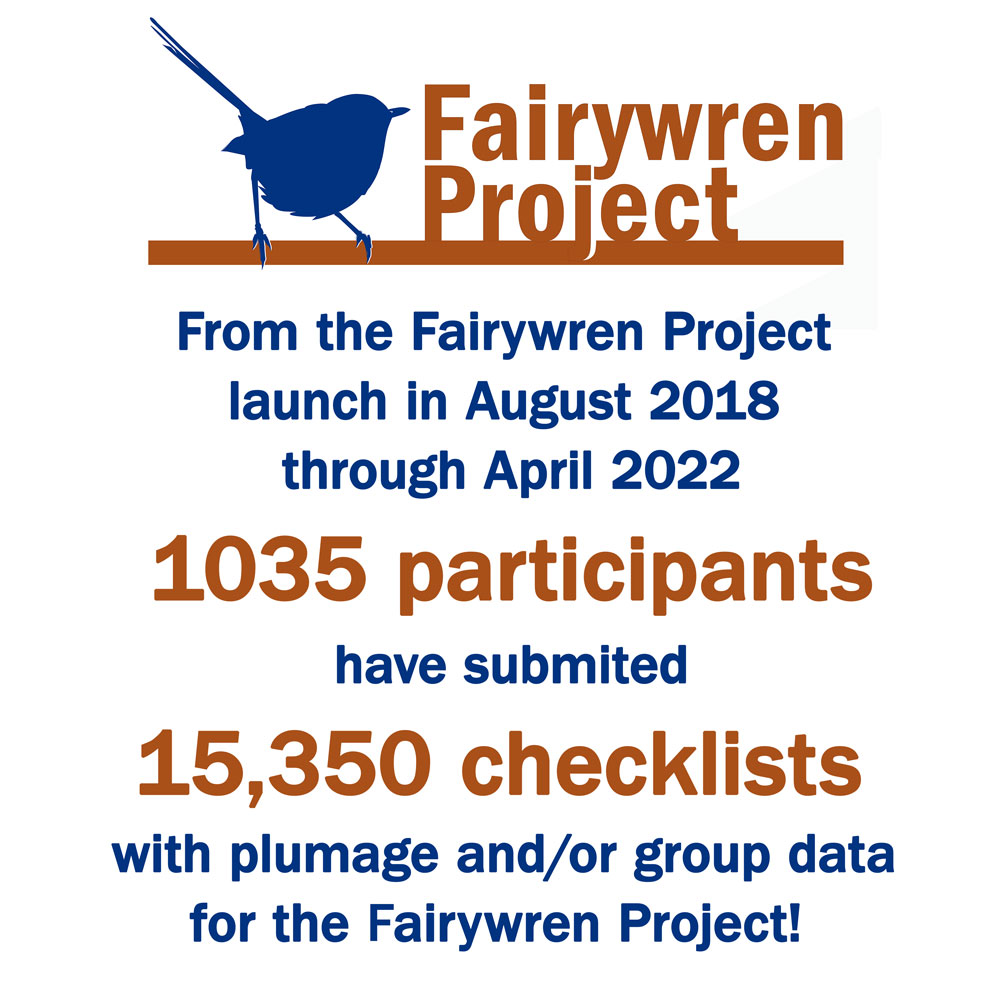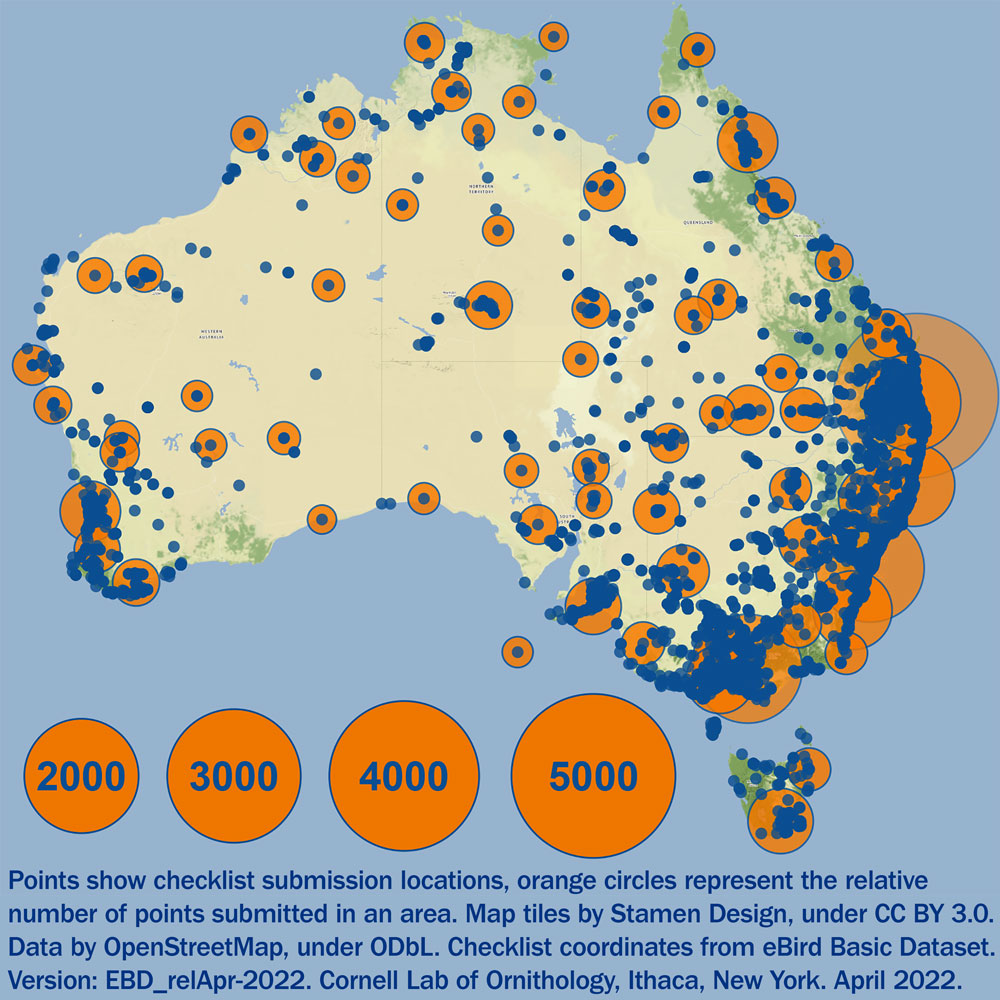Hi all,
New Fairywren Project numbers are in! We're excited to see the project continuing to grow in participant and checklist numbers. Together we're building an incredible database that will help us understand how fairywrens respond to environmental variation. Analyses are currently underway to start answering some of these questions! Below is a quick summary of the next analyses we're working on:
Group size variation across environments
We previously published a pre-print (a pre-publication version of a paper) describing our findings of group size variation in Purple-backed and Superb Fairywrens from the transects we conducted at the beginning of this project. We recently received helpful reviews back on this paper and are now preparing to re-submit it for publication. Once that's complete we'll begin asking whether we see the same trends across more species in the continental data you're submitting.
Prevalence of year-round bright plumage
Most male fairywrens exhibit two plumages per year, a bright, nuptial plumage during the breeding season and a brown, female-like plumage during the non-breeding season or winter. However, in at least a few populations of a few species, old males are known to sometimes exhibit bright breeding plumage year-round. Females pay attention to when males moult into bright plumage and tend to mate with the males that moult the earliest, so these year-round bright males may experience a big advantage to retaining this fancy plumage all year. Soon we're going to be using your data to investigate how widespread this phenomenon is that is currently only known to occur in single populations from a few species.
Until next time, happy birding! Let us know if you have any questions.
Joe and Allison



